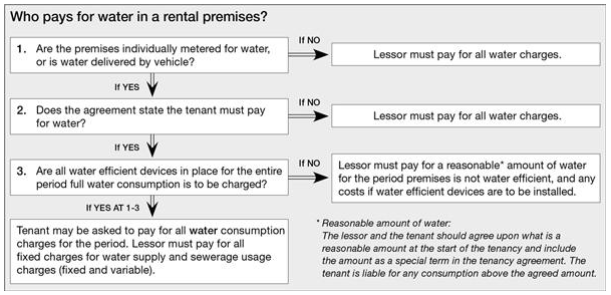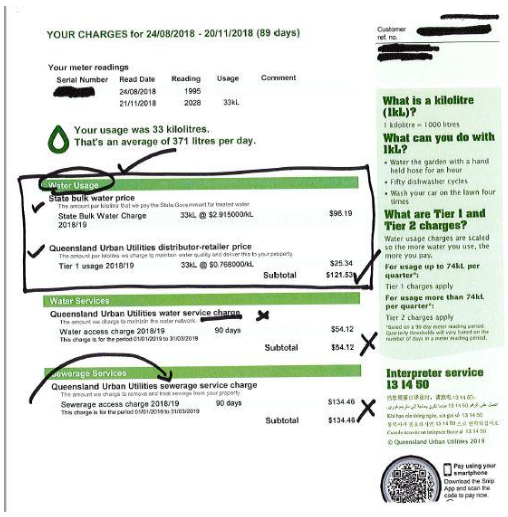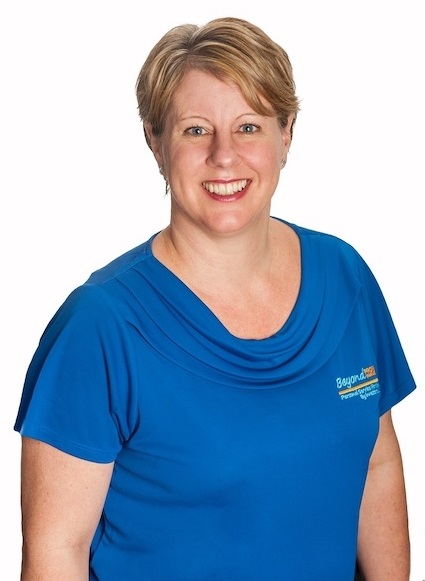Water Charging Legislation for Queensland tenancies – Frequently Asked Questions
How water charging works in Queensland rental properties is a question we often get asked by clients and prospective clients at Beyond Property Management, so I hope this information is useful and provides a handy point of reference for you.
Who pays for water in a Queensland rental property?
- The following is a very handy checklist that can also be found on the RTA website – Factsheet

The first level of water charging is whether the property is individually metered for water. This may rule out particularly some older style blocks of units that have one water meter for the whole block. Generally in this instance, each unit owner is charged an equal percentage by the utility. While this is acceptable for the utility to charge each owner an equal water usage portion without being able to prove who used how much, tenancy legislation does not allow for water to be charged to a Tenant without a separate meter.
The second level of water charging states that water charging must be agreed in the 18a General Tenancy Agreement. On page 2 of this lease is where this is indicated, with further details to be included as a special term. However, you must not ‘contract outside the act’ – ie a special term cannot over-ride the legislation, and it is an offence to include a term in a lease that contradicts legislation.

The third criteria in order to charge a Tenant all of the water usage, is that the property is ‘water efficient’. This means that all internal cold water taps and single mixer taps over a hand basin, kitchen sink and laundry tub plus all shower heads have a flow rate of no more than nine litres per minute. The toilets must also be dual flush and not exceed 6.5l on a full flush and 3.5 litres on a half flush. This is equivalent to a ‘Wels 3 star rating’.

The Wels rating was introduced in 2005 and gives products a rating of 1 to 6. The more stars, the more water efficient. An example of the impact of this is that a standard shower head uses 15-25 litres of water per minute – whereas a 3-star shower head uses 6-7 litres per minute.
How do you prove water efficiency status?
The most common and industry-standard way of proving water efficiency is for a plumber to assess the home and issue a ‘water efficiency certificate’. You can also keep packaging, warranty information and receipts.
Does that mean the Tenant pays the whole water bill?
In short, no. On a water efficient property, the Tenant pays the whole water usage, but not the fixed access and service charges.
The other important point is that the tenant does NOT pay the water utility directly. As the property owner, this account will be in your name and it is important for your own credit history that this bill is paid on time. The process is that the Landlord (or their Property Manager) pay the Utility, and the Tenant is then invoiced and must be given 30 days to pay to reimburse the Landlord (via the Property Manager if not privately managed).
Here is an example of page 2 of a QUU invoice.

What if the property isn’t water efficient?
If the property does not meet criteria for water efficiency, then the following applies if the property:
Is not individually metered – no water can be charged
Is individually metered – then a reasonable amount of water should be paid for by the Landlord, and the ‘reasonable amount’ should be agreed in the lease. This at least protects the Landlord from ‘bill shock’ of unreasonably high water usage by the Tenant (but if a water leak occurs is not a Tenant cost).
The final point to make with water charging is that it is important that you invoice your Tenant promptly each quarter. Tenants must be invoiced as you receive your quarterly bill – you cannot issue multiple invoices in one go or issue them several months later.
Most Landlords prefer to have the water bills sent directly to their Property Manager, who can pay the bill on the Landlord’s behalf and issue the appropriate invoice to the Tenant.
Who reads the water meter?
Generally the water meter is read by the Property Manager on the Entry Condition Report. This may mean when the first invoice from the Utility comes in, the invoice has to be pro-rated to the reading at the time when the Tenant moved in. Your Property Manager can do this calculation based on the per kl charges on the bill from the Utility.
During the tenancy, the water can be invoiced based on water invoice readings as they come in on each bill. The Property Manager would also then read the water meter at the tenancy end – the Vacate Inspection – to again pro-rata the water usage costs since the last invoice from the Utility.
Summary
Water charging is a complex – and pardon the pun, but a ‘dry’ topic! But we hope this information helps to clarify questions you may have had.

This information was provided by Heather Jopson, Principal of Beyond Property Management, a Brisbane-wide specialized property management service.
Beyond PM provide far more to clients than just an industry standard ‘lease administration’ service – they provide expertise to maximize clients return and minimize client risk. With a ‘client for life’ philosophy, cutting-edge technology, and old-fashioned values for customer service, they know what investors want. And that’s what they deliver.
Heather and her team are passionate about property and love being a part of their client’s wealth creation journey through property investment.
And like with any topic related to property investment, Heather is more than happy to have a chat – obligation-free – to see if she can help. She just loves talking property! You can contact Heather on 07 3188 7651 or 0421 235 664 or at heather@beyondpm.com.au.





